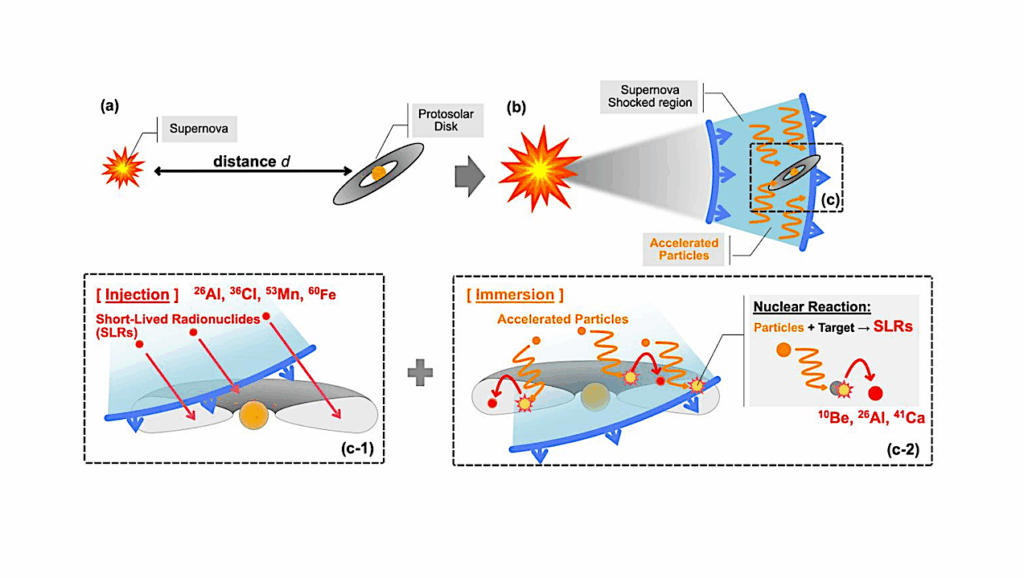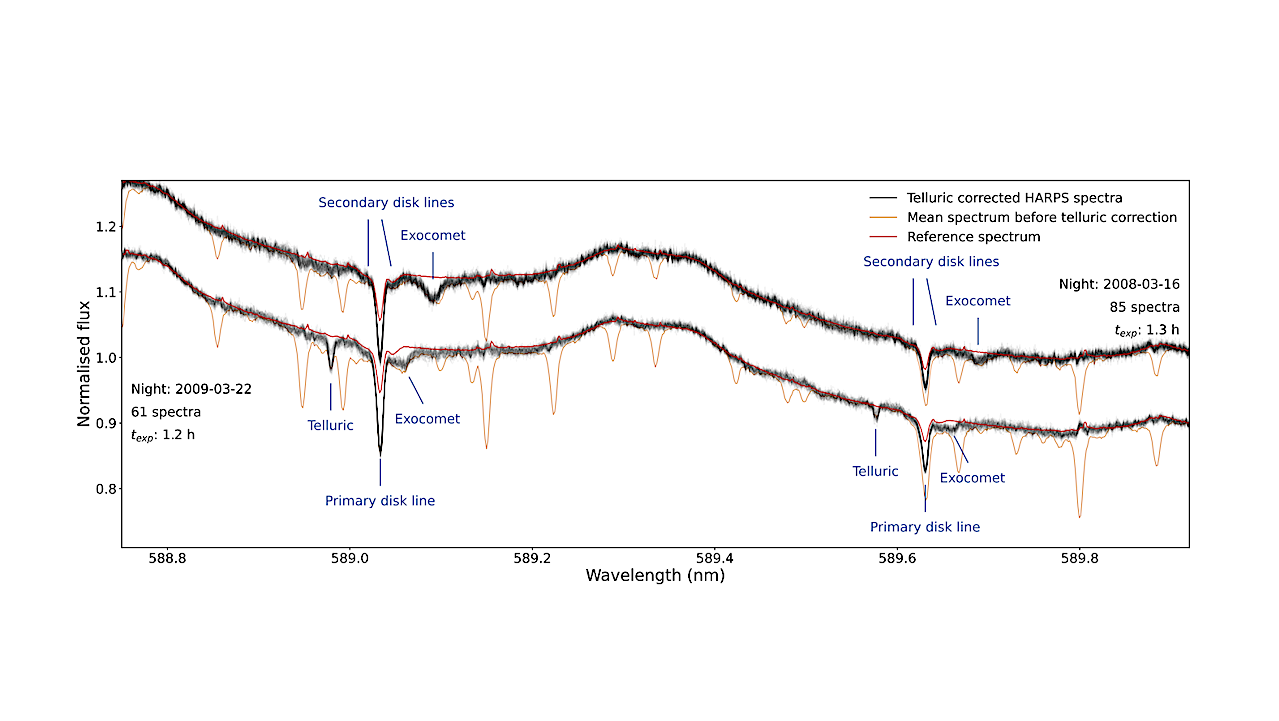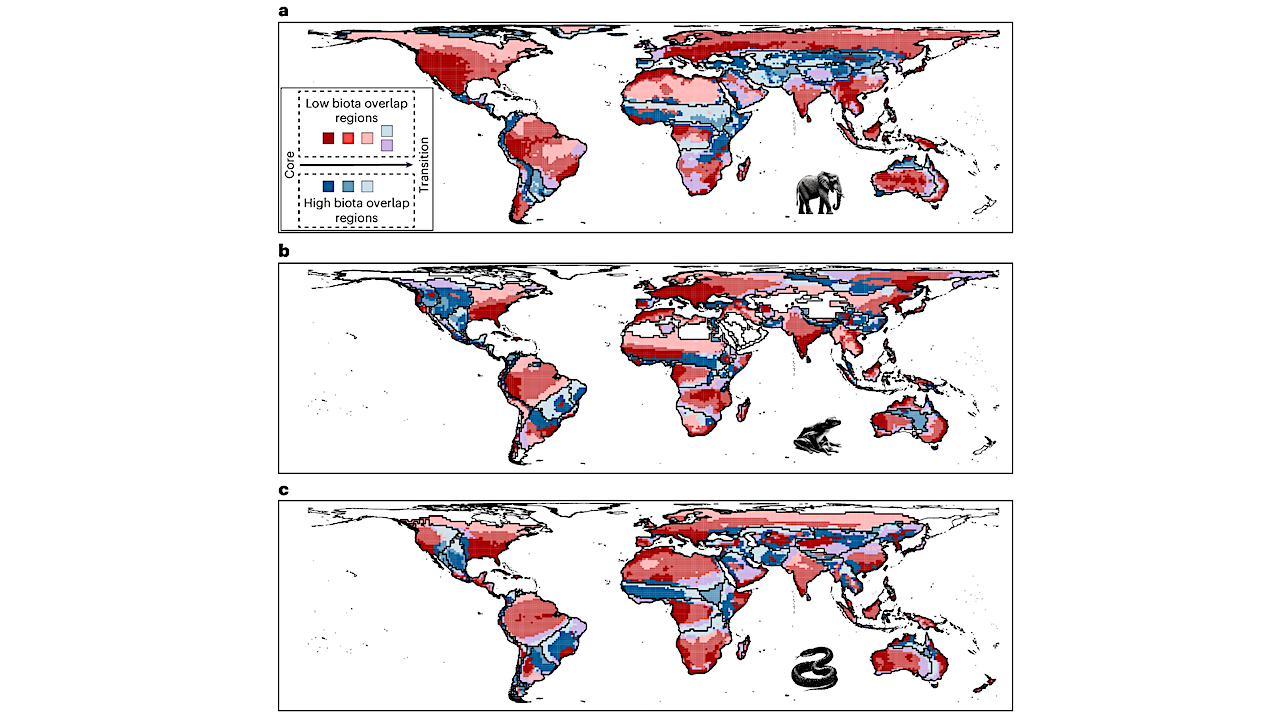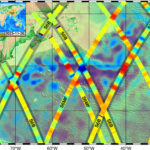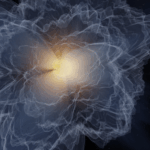Now Reading: A Precise Metallicity and Carbon-to-Oxygen Ratio for a Warm Giant Exoplanet from its Panchromatic JWST Emission Spectrum
-
01
A Precise Metallicity and Carbon-to-Oxygen Ratio for a Warm Giant Exoplanet from its Panchromatic JWST Emission Spectrum
A Precise Metallicity and Carbon-to-Oxygen Ratio for a Warm Giant Exoplanet from its Panchromatic JWST Emission Spectrum


An artist’s rendering of the warm exoplanet WASP-80 b and an overview of its planet-system parameters. Planet image credit: NASA/Ames Research Center. astro-ph.EP
WASP-80 b, a warm sub-Jovian (equilibrium temperature ~820 K, 0.5 Jupiter masses), presents an opportunity to characterize a rare gas giant exoplanet around a low-mass star.
In addition, its moderate temperature enables its atmosphere to host a range of carbon and oxygen species (H2O, CH4, CO, CO2, NH3).
In this paper, we present a panchromatic emission spectrum of WASP-80 b, the first gas giant around a late K/early M-dwarf star and the coolest planet for which the James Webb Space Telescope has obtained a complete emission spectrum spanning 2.4-12 μm, including NIRCam F322W2 (2.4-4 μm) and F444W (4-5 μm), and MIRI LRS (5-12 μm).
We report confident detections of H2O, CH4, CO, and CO2, and a tentative detection of NH3. We estimate WASP-80 b’s atmospheric metallicity and carbon-to-oxygen ratio and compare them with estimates for other gas giants.
Despite the relative rarity of giant planets around low-mass stars, we find that WASP-80 b’s composition is consistent with other hot gas giants, suggesting that the formation pathway of WASP-80 b may not be dissimilar from hot gas giants around higher-mass stars.

Transiting giant planets around low-mass stars that have been observed, or will be observed, with JWST through Observation Cycle 3. We define these “low stellar mass Jovians” as planets with stellar mass < 0.6MSun and planet mass > 0.3MJupiter and shade that region in green. JWST targets with masses just outside of those ranges are also plotted in green. Grey points show all other known transiting planets from the NASA Exoplanet Archive. — astro-ph.EP
Lindsey S. Wiser, Taylor J. Bell, Michael R. Line, Everett Schlawin, Thomas G. Beatty, Luis Welbanks, Thomas P. Greene, Vivien Parmentier, Matthew M. Murphy, Jonathan J. Fortney, Kenny Arnold, Nishil Mehta, Kazumasa Ohno, Sagnick Mukherjee
Subjects: Earth and Planetary Astrophysics (astro-ph.EP)
Cite as: arXiv:2506.01800 [astro-ph.EP] (or arXiv:2506.01800v1 [astro-ph.EP] for this version)
https://doi.org/10.48550/arXiv.2506.01800
Focus to learn more
Submission history
From: Lindsey Wiser
[v1] Mon, 2 Jun 2025 15:41:33 UTC (4,917 KB)
https://arxiv.org/abs/2506.01800
Astrobiology,
Stay Informed With the Latest & Most Important News
Previous Post
Next Post
-
 012024 in Review: Highlights from NASA in Silicon Valley
012024 in Review: Highlights from NASA in Silicon Valley -
 02Panasonic Leica Summilux DG 15mm f/1.7 ASPH review
02Panasonic Leica Summilux DG 15mm f/1.7 ASPH review -
 03From Polymerization-Enabled Folding and Assembly to Chemical Evolution: Key Processes for Emergence of Functional Polymers in the Origin of Life
03From Polymerization-Enabled Folding and Assembly to Chemical Evolution: Key Processes for Emergence of Functional Polymers in the Origin of Life -
 04How New NASA, India Earth Satellite NISAR Will See Earth
04How New NASA, India Earth Satellite NISAR Will See Earth -
 05And Thus Begins A New Year For Life On Earth
05And Thus Begins A New Year For Life On Earth -
 06Astronomy Activation Ambassadors: A New Era
06Astronomy Activation Ambassadors: A New Era -
07SpaceX launch surge helps set new global launch record in 2024














